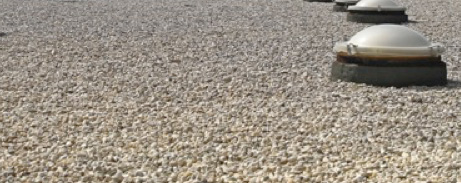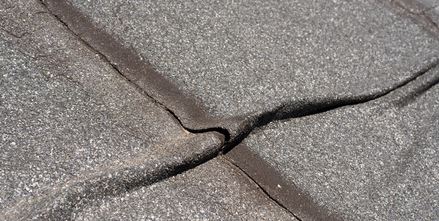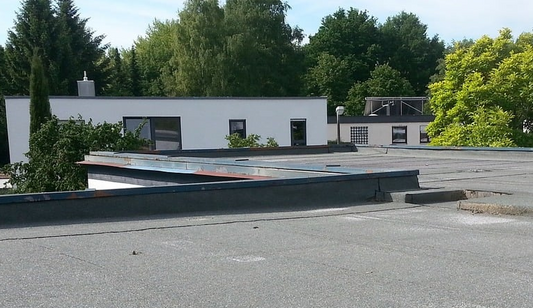You're about to take on a DIY GRP fibreglass roof installation, so having a thorough understanding is vital to understand the process and requirements.
First, prepare your roof deck by cleaning, drying, and filling any cracks or gaps. Then, lay the fibreglass roof, using the correct materials and tools, and applying edge trims and finishing touches.
Don't forget to wear protective gear and follow safety precautions to avoid injury or exposure to hazardous materials.
By following these steps and best practices, you'll be well on your way to achieving a durable and watertight GRP fibreglass roof - and that's just the beginning of your journey to a successful installation.
Key Points
- Ensure a solid, even roof deck surface by cleaning, drying, and preparing the deck before applying the GRP fibreglass roof.
- Follow manufacturer's instructions for mixing and applying resin, and use the recommended catalyst and hardener for a strong and durable bond.
- Wear protective equipment, including gloves, masks, and goggles, to prevent injury and exposure to hazardous materials during installation.
- Apply edge trims correctly to provide a watertight seal and finish off the GRP fibreglass roof installation, using a Polyurethane adhesive for a strong bond.
Understanding Fibreglass GRP Roofing
When it comes to weather-proofing flat or pitched roofs, you've likely come across Fibreglass GRP Roofing, a reliable method that offers a 20+ years warranty and low maintenance.
This method isn't only visually attractive but also provides a seamless and continuous waterproof roof that's durable, flexible, and highly resistant to weathering and aging.
As a result, it's a cost-effective solution for your roofing needs.
GRP -which stands for Glass Reinforced Polyester - is made up of layers of Chopped Strand Matting wetted out with resin infused with a catalyst to help it cure.
This combination creates a robust material that can withstand the elements.
With Fibreglass GRP Roofing, you can rest assured that your roof will remain watertight for years to come.
The best part? This method requires minimal upkeep, so you won't have to worry about frequent repairs or replacements.
Essential Materials and Tools
To guarantee a successful GRP fibreglass roof installation, you'll need to gather the right materials and tools, which can be broadly categorized into essential materials, standard tools, specialist tools, and protective equipment.
The essential materials you'll need include Roofing Resin, Fibreglass Matting (Chopped Strand Matting or CSM), Roofing Topcoat, Catalyst or Hardener, and Roofing Edge Trims. Make sure to follow the manufacturer's instructions for the correct ratio of resin to fibre matting, typically one-third resin to two-thirds glass, to secure a strong and durable bond.
You'll also need standard tools like buckets, rollers, snips, tape measure, and brushes. Additionally, specialist tools like paddle rollers and Catalyst Dispenser will come in handy.
Alternatively, you can purchase a complete GRP flat roofing kit that includes all the materials and tools you'll need. Simply choose the kit that suits your roof dimensions. (We stock grp roof kits from Silverseel, Cure It & Metrodeck)
Don't forget to prioritize your safety by wearing protective equipment such as Gloves, Masks, throwaway coveralls, and goggles or safety specs to prevent injury and exposure to hazardous materials. With the right materials and tools, you'll be well on your way to a successful GRP fibreglass roof installation.
Preparing the Roof Deck
Before applying the GRP fibreglass roof system, you must guarantee the roof deck is thoroughly cleaned, dried, and prepared to provide a solid, even surface for the new roof.
Remove any debris, dirt, or old roofing material from the deck, taking care not to damage the underlying structure. Sweep or blow away any loose particles, and then mop the deck with a degreaser to remove any oil or grease.
Next, confirm the deck is completely dry, as any moisture can compromise the adhesion of the GRP system.
You can speed up the drying process by using a hot air blower or sunlight, depending on the weather. Once the deck is dry, inspect it for any cracks or gaps, and fill them with a suitable filler or sealant.
Sand the filled areas smooth, and then wipe down the entire deck with a tack cloth to remove any dust or debris.
Laying the Fibreglass Roof
You'll start laying your fibreglass roof by verifying the deck boards are correctly fixed to the timber joists, using compressed air or a gas-powered nail gun to prevent porosity in the laminate.
Fix the boards to timber joists using a 63mm (or longer) galvanised ring shank nail at 200mm centres, making sure the last row of boards is cut off in line with the fascia.
Align the boards to run straight, fixing them as you go, and verify the decking board doesn't come into contact with water to prevent moisture absorption.
Next, build a fall into the substrate to allow the roof to drain completely, and lay 18mm OSB3 boards lengthways at 90° to the roof joists.
This will provide a solid base for your fibreglass roof.
Mask off the roof properly to avoid spillages, and use a consolidator roller carefully to prevent fine spray carried by the wind.
Applying Edge Trims and Finishing
With your solid foundation in place, you're ready to apply edge trims for your GRP roof that'll provide a watertight seal and finish off your GRP fibreglass roof installation.
These trims are manufactured with a high adhesion finish on one side, which you'll fix to the decking board using nails or staples. To guarantee a secure hold, use 13mm galvanised clout nails or a gas-powered or compressed-air stapler.
Next, bond the trims in place using a Polyurethane (PU) adhesive specifically designed for bonding GRP trims. Apply the adhesive to the batten around the perimeter of the roof using a skeleton gun.
Make sure the trims are aligned correctly and securely fixed to prevent water ingress and guarantee a watertight seal.
When choosing a PU adhesive, opt for a high-quality one that's designed for bonding GRP trims. This'll guarantee a strong and durable bond.
Safety Precautions and Best Practices
When working with GRP fibreglass roof installation, several essential safety precautions and best practices must be followed to prevent injuries, health issues, and guarantee a successful installation.
You'll need to wear protective equipment such as gloves, masks, throwaway coveralls, and goggles or safety specs to prevent injury from resin and fibreglass. It's also vital to work in a well-ventilated area to avoid inhaling resin fumes and styrene vapors, which can cause health issues.
When handling resin, make sure to avoid skin contact and wash your hands thoroughly to prevent skin irritation and potential long-term health effects.
Clear the roofing area of debris and obstructions to prevent tripping hazards and allow for easy movement during the installation process.
Always follow the manufacturer's instructions for mixing and applying resin, and use the recommended catalyst and hardener to confirm a safe and successful installation.
Troubleshooting and Maintenance Tips
Identifying and addressing potential issues early on guarantees a longer lifespan for your GRP fibreglass roof, and regular maintenance checks can help prevent costly repairs down the line.
As you inspect your roof, look out for signs of damage, such as cracks, blisters, or soft spots.
If you notice any of these issues, address them promptly to prevent further damage.
Regularly clean your roof: Remove dirt, debris, and algae to prevent damage and confirm proper water runoff.
Inspect your roof's sealants: Check the condition of sealants around vents, skylights, and flashings, and reapply as needed.
Trim nearby trees and vegetation: Keep branches and leaves from rubbing against your roof to prevent scratches and damage.
Rounding Up
With these steps, you've successfully installed a DIY GRP fibreglass roof.
Remember to regularly inspect and maintain your roof to guarantee its longevity.
Keep an eye out for signs of damage, and address any issues promptly.
By following these guidelines and taking necessary safety precautions, you'll enjoy a durable, weather-tight, and attractive roof for years to come.




